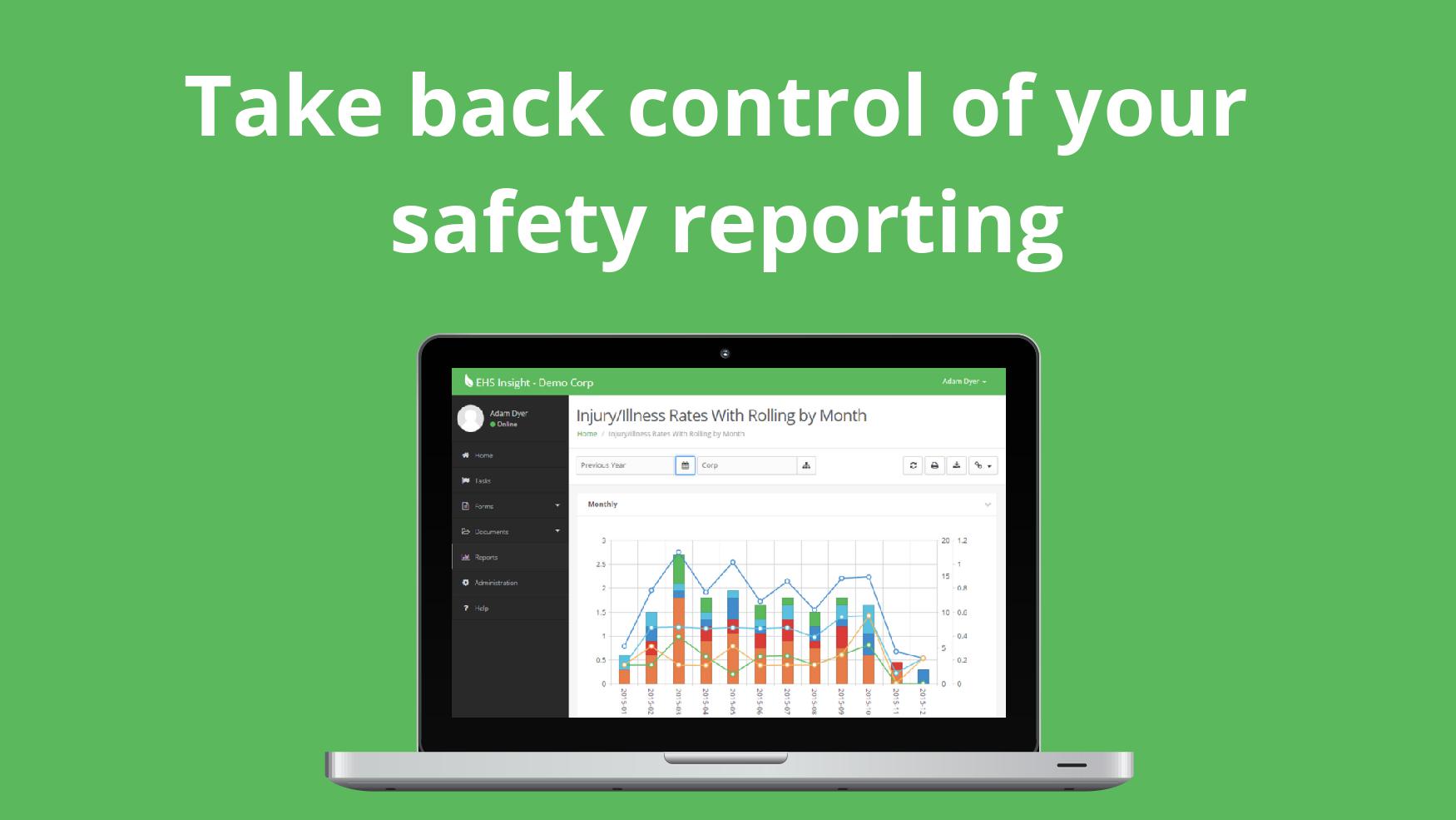Safety reports are common in a variety of industries, but what should be included in them?
Much of your content will depend on your unique company, which is why there is no cut and dry answer. But there are a few general safety metrics that every safety report should include.
These metrics help you ensure you’re tracking the right objectives in your department and making a noticeable impact on your organization’s health and safety program. Take a look at our top five KPIs to bolster your safety reports.
#1 – Safety Incidents
Safety incidents are a mainstay on most safety reports. This lagging indicator is a huge part of gauging a safety program’s effectiveness by comparing incidents over time along with steps you take to mitigate incidents. If you see a decrease in the number of incidents after implementing a certain process or precaution, you might be inclined to say that something’s working well.
Lagging indicators like this one help you to establish a baseline to measure future progress. It’s purely data-driven and can remove much of the guesswork associated with decision making and actions.
#2 – Near Misses
Reporting near misses can help uncover additional safety hazards that could become problematic. It’s also important to realize how a particular issue was averted to raise safety awareness of the problem and help others avoid it in the future.
#3 – Completed Audits and Inspections
Audits and inspections are commonplace for any health and safety department. Some of them are required by governing bodies, while others are strictly for internal purposes.
In either case, documenting the number of audits and inspections and measuring those against other safety-related factors can give you a better understanding of how effective your audits and inspections are.
For example, if you see a high number of incidents and a low number of inspections compared to another year, it could indicate that a lack of inspections might be a culprit behind the increase in incidents. This is speculation, of course, so examining other components is necessary to gain the right perspective.
#4 – Employee Safety Training
Tracking employee safety training completion can be a tedious, time-consuming process, but it’s one of the most essential parts of safety reporting. Staying on top of which team members have up-to-date training certificates and which ones are about to expire can help managers take a proactive approach in improving workplace safety and compliance. See how training tracking software can help improve your training program.
Training at all levels, from hourly employees to company leadership, is critical in creating a safe workplace organization. Staying on top of this valuable component shows your commitment to maintaining a safe workplace and can help inspire others to do the same.
#5 – Worker Engagement
Engaged workers are safe, productive workers. The more you can engage them in workplace safety, the more likely they are to follow through, stick to the rules, and encourage others to do the same.
Worker engagement takes many forms, from participating in training and safety talks to reporting incidents and near misses to conducting timely inspections and offering suggestions or feedback.
Tracking worker engagement can be difficult, especially if you don’t have an established process to collect their participation. Because there are so many ways a worker can engage with the safety program, there are various touchpoints that can monitor their involvement. For example, your training might be computer-automated, but safety meetings might rely on a manual sign-in sheet.
Creating a single way to document engagement can help you better identify workers who are actively involved in the safety culture. Ideally, everyone will be on this radar, but knowing for sure can help you identify those who might be more at risk than others.
Why Did We Choose These KPIs?
Truth be told, there are lots of different things you can track and measure in a health and safety program. We chose these five because they can be applied to almost any industry or company. Plus, they are equal parts: specific, measurable, achievable, relevant, and timely – SMART.
You may find other important metrics to include, but the above five will give you data-driven insights into your health and safety program to help you make educated decisions for improvements and advancements.
We’d love to hear your thoughts. Drop us a comment below or reach out to our team to learn how you can strengthen your safety reports.
Further reading: How to Measure the Success of Your EHS Program
